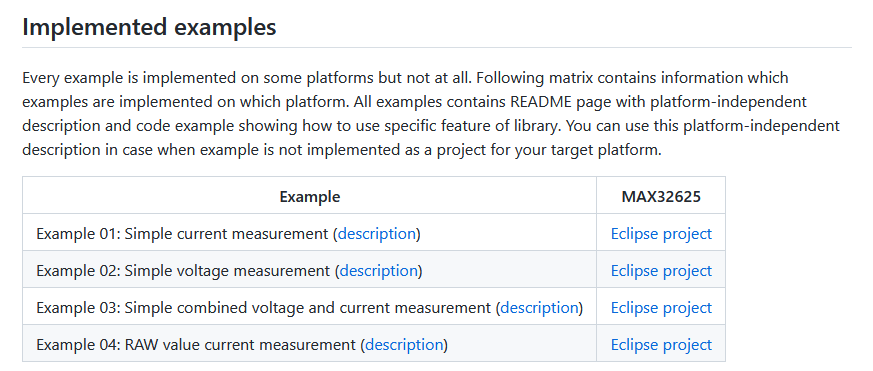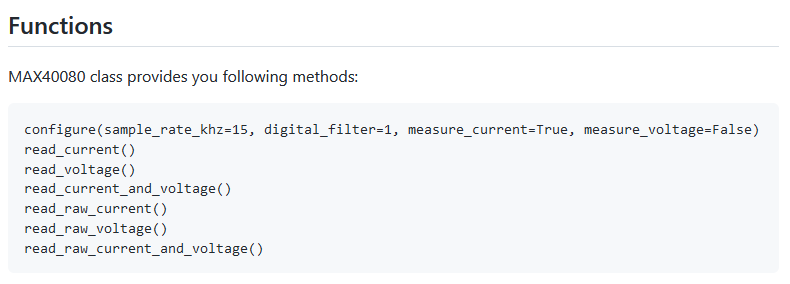Hello everyone. I welcome you to my 5th blog post as part of Experimenting with Current Sense Amplifiers Design Challenge. This blog is very short because I am very busy at the time of writing this blog post and I have no time to write proper blog.
Last weekend I published first version of both my Libraries targeting MAX40080 CSA sensor which we use as part of design challenge. Both Libraries are at available online the Github.
Python library for Raspberry Pi is at: https://github.com/misaz/MAX40080-PythonLibrary
C library for microcontrollers is at: https://github.com/misaz/MAX40080-Library
Both Libraries were partially tested, and at least basic features should work.
C Library
C Library contains implemented 4 examples that are linked at main page of library:

If you click at description link, you will get redirected to the details page of corresponding example. All examples are currently implemented for MAX32625 MCU. For now, if you use different MCU then you will need to port the library yourself. Later I plan to add support for some other platforms. Every example description page contains description of example, example code, detailed description of every part of code and MAX32625 port specific details.
Python Library
I originally want to develop only C library but based on multiple requests I created Python library also. It is simple and support only basic features of sensor for now. You can install it by executing following command in terminal:
pip3 install git+https://github.com/misaz/MAX40080-PythonLibrary
Then, you can create very simple Python file max40080_test.py with following content:
from max40080 import MAX40080 max = MAX40080() max.configure() print(max.read_current())
And then you can execute your python script:
python3 max40080_test.py
You should see one current measurement on the screen.
Library provides 7 functions to you. They are mentioned (with optional parameters) at main page in Github repo:

Feedback
Both libraries are available to everyone. Everyone can freely use them. Even I tested them, they may still be some bugs. Kindle report them below in comments or at GitHub.
Last words
For now, it is all. Thank you for reading this blog. Soon I will post more detailed blogs about my libraries. Because I am very busy this week I will complete and post these blogs at the end of the week or most probably at the weekend.
Next blog: Blog #6: MAX40080 C Library
